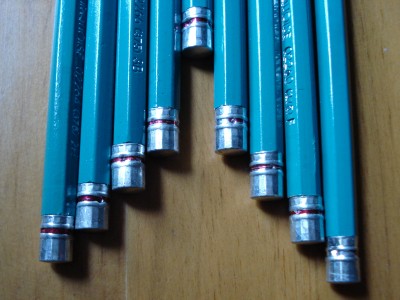And Then There Were Three??, a new post at Timberlines, a blog by pencil industry leader WoodChuck, reveals that the last large American based pencil manufacturer – Sanford – will be closing their US manufacturing facilities in 2009, moving production to Mexico.
The closures were announced in early November.
Two newspaper reports:
Sanford closing; 355 jobs to be lost Marshall County Tribune, November 12, 2008
Sanford regrouping to cost Shelbyville jobs Shelbyville Times-Gazette, November 11, 2008
In other relocation news, Woodchuck also noted here this morning that Lyra (Germany) will be moving production to China. (Lyra joined Dixon as a FILA acquisition earlier this year.)
Pencilpages.com has some nice photos of the Sanford plant in Lewisberg.
When I read about pencils being packaged by hand, I suspect that the factory wasn’t “modern” by any means. The mainstream Sanford pencils – the Mirado and Mirado Black warrior – have their fans, yet there seem to be many who feel the product lines have been allowed to deteriorate in quality over the years.
I also wonder where this leaves the remaining small independent manufacturers – General and Musgrave. Will the departure of their large competitor impact their own supply chain?
Though the story still has time to unfold, and could surprise us, it seems like an era is coming to an end. What are your thoughts?














